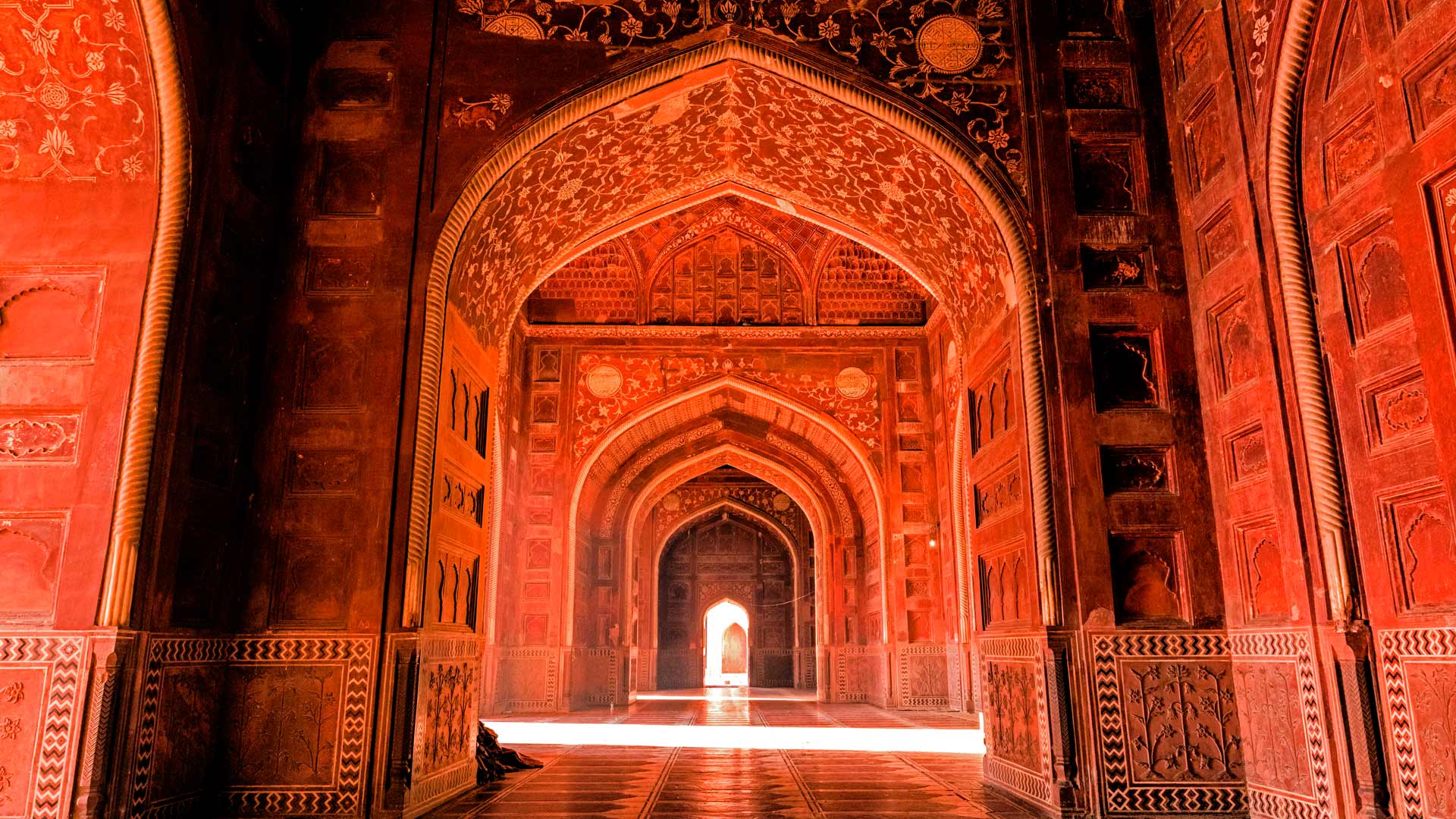
taj Mahal
The Taj Mahal is an ivory-white marble mausoleum on the south bank of the Yamuna river in the Indian city of Agra. It was commissioned in 1632 by the Mughal emperor Shah Jahan (reigned 1628–1658) to house the tomb of his favourite wife Mumtaz Mahal; it also houses the tomb of Shah Jahan himself.
The Taj Mahal is widely recognized as "the jewel of Muslim art in India and one of the universally admired masterpieces of the world's heritage". It is regarded by many as the epitome of Mughal architecture and is one of the most popular tourist destinations in India.
The Taj Mahal was designated a UNESCO World Heritage Site in 1983. It is one of the Seven Wonders of the World and is considered to be one of the most beautiful buildings in the world.

Agra Fort
Agra Fort, also known as Lal Qila or Qila-i-Akbari, is a historical fort in the city of Agra located in the Indian state of Uttar Pradesh. It was built by the Mughal emperor Akbar from 1565 and the present-day structure was completed in 1573. It served as the main residence of the rulers of the Mughal dynasty until 1638, when the capital was shifted from Agra to Delhi. It was also known as the "Lal-Qila" or "Qila-i-Akbari". Agra Fort is a UNESCO World Heritage Site.
The fort is a massive red sandstone structure that is over two kilometers long and one kilometer wide. It has four gates, each of which is flanked by two towers. The main gate, the Amar Singh Gate, is the largest and most impressive. The fort is also home to a number of palaces, mosques, and other buildings. The most famous of these is the Diwan-i-Khas, a hall of private audience that is decorated with beautiful mosaics and inlaid work. The fort is also home to the Moti Masjid, a white marble mosque that is considered to be one of the most beautiful mosques in India. Agra Fort is a popular tourist destination and is visited by millions of people each year.

Fatehpur Sikri
Fatehpur Sikri is a deserted city in the Agra District of Uttar Pradesh, India. Founded in 1571 by Mughal emperor Akbar, served as the capital of the Mughal Empire from 1571 to 1585, when Akbar abandoned it due to a campaign in Punjab and was later completely abandoned in 1610.
The city is known for its red sandstone architecture, which blends Islamic and Hindu elements. The most notable buildings in Fatehpur Sikri include the Buland Darwaza, the Jama Masjid, the Tomb of Salim Chisti, the Jodha Bai's Palace, and the Panch Mahal.
Fatehpur Sikri was declared a UNESCO World Heritage Site in 1986. It is a popular tourist destination, and visitors can explore the ruins of the city and learn about its history and culture.
Witness Architectural Marvels

Enjoy Mughal cuisine

Local Sightseeing
